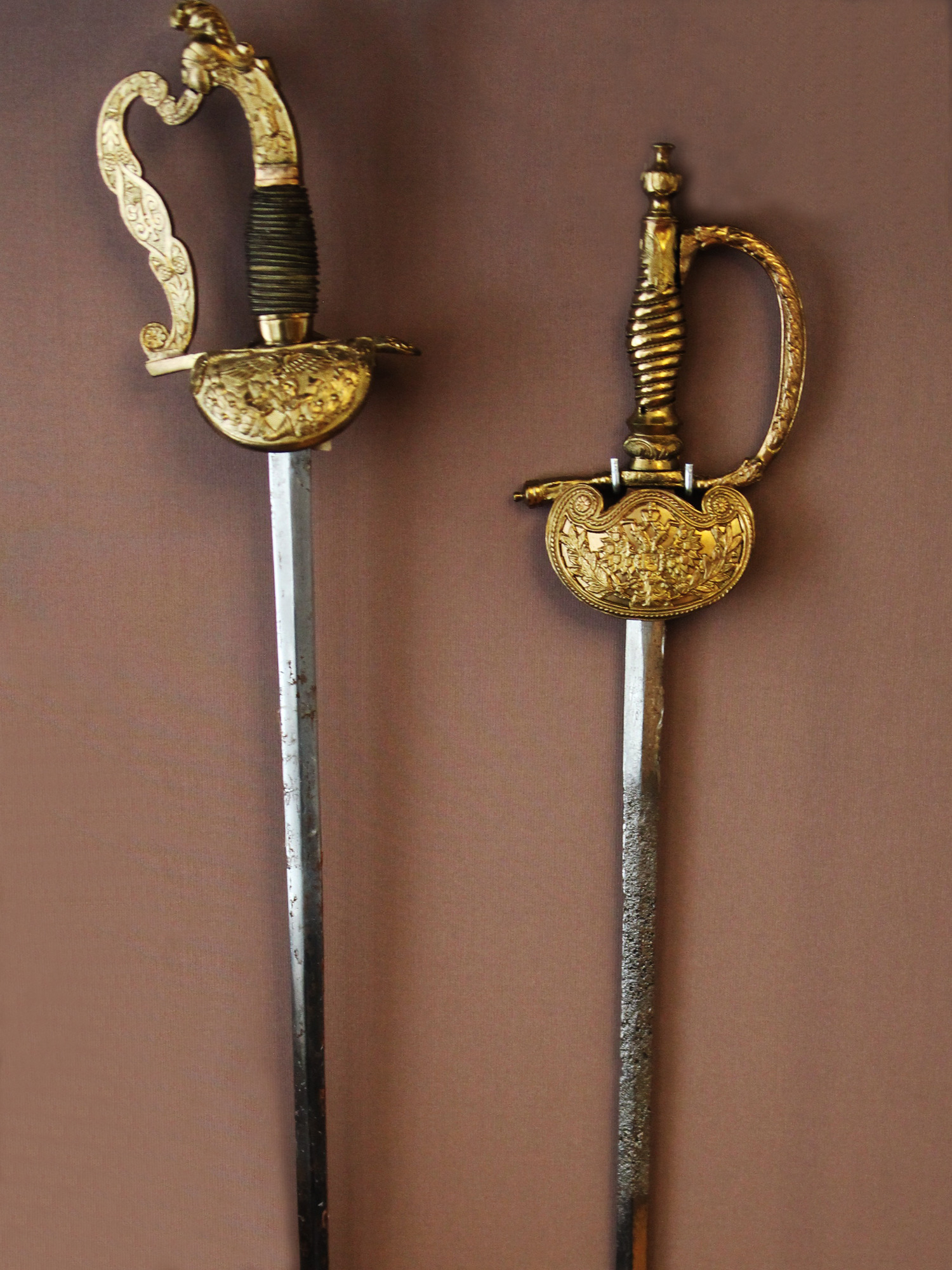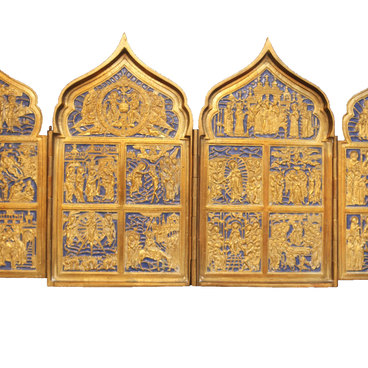The sword blade exhibited in the Museum was manufactured by E& F Hörster in Germany. In the second half of the 19th century, Russia often bought foreign blades wholesale, and Russian craftsmen then used them to make swords.
In the Russian Empire, the sword standard for a public servant, i. e. a civil official, was first fixed by a regulation signed by the Emperor Nicholas I. The regulation required public servants to wear swords and governed certain parameters of the weapon, which changed from time to time.
During the reign of Alexander II, the Senate issued a decree prescribing a uniform shape of the sword for all government agencies. The sword was supposed to have a straight steel blade (with various cross-sections) and a brass sword hilt with a cast, twisted, gilded grip. Towards the end of the 19th century, grip pommels were increasingly often made in the form of an imperial crown.
Generally, the décor of blades was very diverse because swords for public servants were manufactured by numerous private companies. The scabbards of such swords would normally be made of leather.
Alexander II also prescribed a uniform method of wearing a sword — on a baldric worn under the uniform. The laps of long suits had a notch for the hilt.
Civil and court officials would wear a sword with all kinds of uniform, whether ceremonial or regular. However, there were several exceptions to the rule: weapons were supposed to be taken off during the exercise of official duties, a wedding ceremony, ball dances, and worship of icons. A retired public servant had the right to ask for permission to continue to wear a sword.
In the Russian Empire, the sword standard for a public servant, i. e. a civil official, was first fixed by a regulation signed by the Emperor Nicholas I. The regulation required public servants to wear swords and governed certain parameters of the weapon, which changed from time to time.
During the reign of Alexander II, the Senate issued a decree prescribing a uniform shape of the sword for all government agencies. The sword was supposed to have a straight steel blade (with various cross-sections) and a brass sword hilt with a cast, twisted, gilded grip. Towards the end of the 19th century, grip pommels were increasingly often made in the form of an imperial crown.
To protect the hand, the guard was used, a special element consisting of a plate and a knuckle-bow. The plate would usually be decorated with a double-headed eagle, the Russian state emblem. When the country’s state emblem changed in 1857, the eagle on public servants’ swords, too, began to look differently, and its wings, raised higher up, started wearing simplified pictures of the eight state emblems of the kingdoms and grand duchies making up the Russian Empire.
Generally, the décor of blades was very diverse because swords for public servants were manufactured by numerous private companies. The scabbards of such swords would normally be made of leather.
Alexander II also prescribed a uniform method of wearing a sword — on a baldric worn under the uniform. The laps of long suits had a notch for the hilt.
Civil and court officials would wear a sword with all kinds of uniform, whether ceremonial or regular. However, there were several exceptions to the rule: weapons were supposed to be taken off during the exercise of official duties, a wedding ceremony, ball dances, and worship of icons. A retired public servant had the right to ask for permission to continue to wear a sword.


